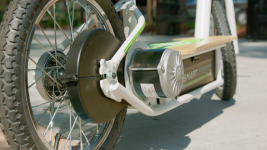jetpackjbd
100 W
ALEAIVY 24V 30000mAh Lithium Battery
I need a lithium battery capable of 30A continuous load at 24v that can fit in a 6.8”x8.5”x3.9” space. I haven’t been able to find anything that would fit at this load level outside of SLA batteries. Is this listing legit? I’m not sure how dense lithium batteries have gotten but this seems a bit small for the capacity listed. I don’t really need this much capacity, 12ah is the minimum I would need, but the current is a must. And will this burn my house down within a month if I buy it?
I need a lithium battery capable of 30A continuous load at 24v that can fit in a 6.8”x8.5”x3.9” space. I haven’t been able to find anything that would fit at this load level outside of SLA batteries. Is this listing legit? I’m not sure how dense lithium batteries have gotten but this seems a bit small for the capacity listed. I don’t really need this much capacity, 12ah is the minimum I would need, but the current is a must. And will this burn my house down within a month if I buy it?



